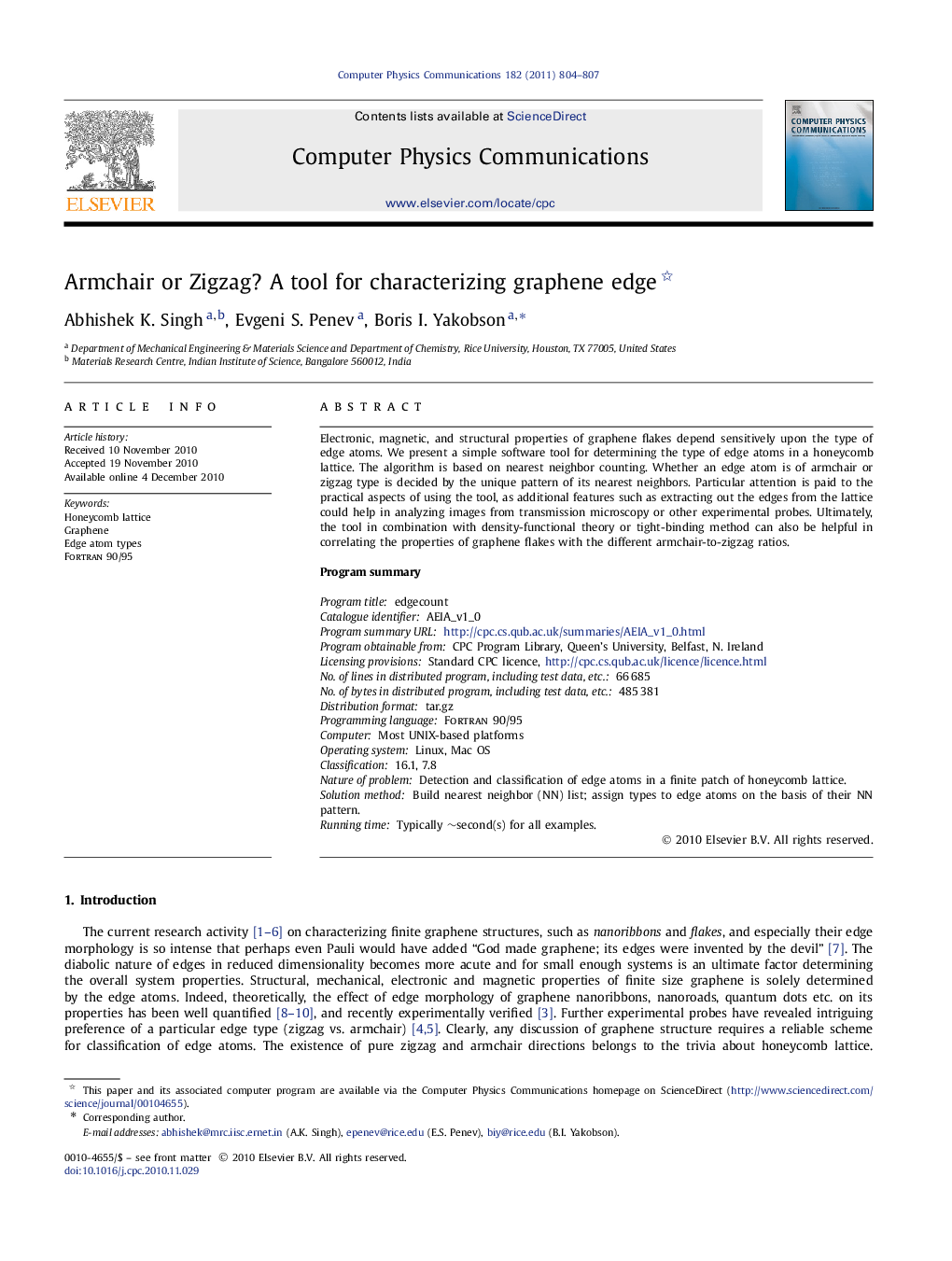| کد مقاله | کد نشریه | سال انتشار | مقاله انگلیسی | نسخه تمام متن |
|---|---|---|---|---|
| 502315 | 863700 | 2011 | 4 صفحه PDF | دانلود رایگان |

Electronic, magnetic, and structural properties of graphene flakes depend sensitively upon the type of edge atoms. We present a simple software tool for determining the type of edge atoms in a honeycomb lattice. The algorithm is based on nearest neighbor counting. Whether an edge atom is of armchair or zigzag type is decided by the unique pattern of its nearest neighbors. Particular attention is paid to the practical aspects of using the tool, as additional features such as extracting out the edges from the lattice could help in analyzing images from transmission microscopy or other experimental probes. Ultimately, the tool in combination with density-functional theory or tight-binding method can also be helpful in correlating the properties of graphene flakes with the different armchair-to-zigzag ratios.Program summaryProgram title: edgecountCatalogue identifier: AEIA_v1_0Program summary URL:http://cpc.cs.qub.ac.uk/summaries/AEIA_v1_0.htmlProgram obtainable from: CPC Program Library, Queen's University, Belfast, N. IrelandLicensing provisions: Standard CPC licence, http://cpc.cs.qub.ac.uk/licence/licence.htmlNo. of lines in distributed program, including test data, etc.: 66 685No. of bytes in distributed program, including test data, etc.: 485 381Distribution format: tar.gzProgramming language:Fortran 90/95Computer: Most UNIX-based platformsOperating system: Linux, Mac OSClassification: 16.1, 7.8Nature of problem: Detection and classification of edge atoms in a finite patch of honeycomb lattice.Solution method: Build nearest neighbor (NN) list; assign types to edge atoms on the basis of their NN pattern.Running time: Typically ∼second(s) for all examples.
Journal: Computer Physics Communications - Volume 182, Issue 3, March 2011, Pages 804–807